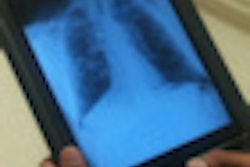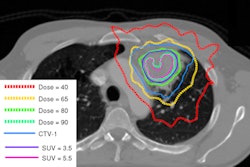FDG-PET scans can help determine earlier whether treatment for tuberculosis (TB) is working or the disease is multidrug-resistant (MDR), according to a study in the June issue of the Journal of Nuclear Medicine.
The prospective pilot study enrolled 24 patients with tuberculosis who underwent FDG-PET scans prior to receiving treatment with isoniazid, rifampicin, and ethambutol.
After four months of treatment, the patients received another FDG-PET scan to measure averaged maximum standardized uptake value (SUVmax) derived from early and delayed imaging, percentage change in SUVmax, and the number of involved lymph node basins.
The researchers found that SUVmax of involved lymph nodes, the number of involved lymph node basins, and C-reactive protein levels assessed by FDG-PET were significantly higher in nonresponders than responders.
They also determined that a cutoff of five or more lymph node basins allowed a separation of treatment responders and nonresponders.
Lead study author Dr. Mike Sathekge, from the department of nuclear medicine at the University of Pretoria in South Africa, noted that FDG-PET could become a valuable clinical adjunct to available tests in patients for whom such tests are not feasible, are inconclusive, or are too lengthy to be of clinical relevance.




















